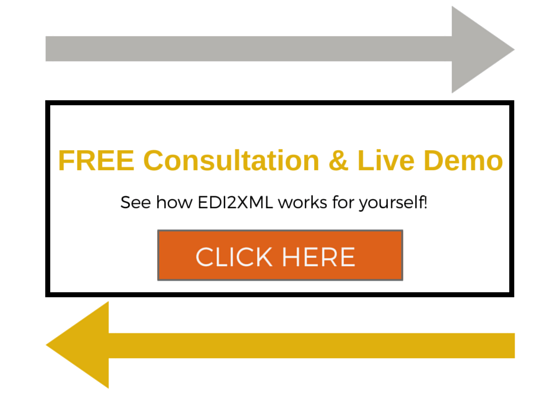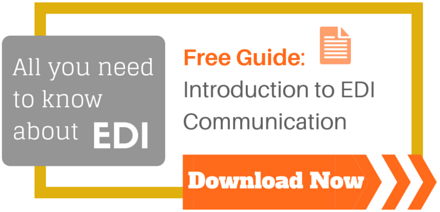Jan 2014
This post was updated to reflect current trends and information.
Why convert EDI to XML?
In this blog post, I will explain why our team decided to convert EDI to XML as well as the advantages and benefits of using this conversion from EDI to XML. On many occasions, EDI consultants, project managers and EDI developers and implementers brought up the following questions:
 What are the benefits of having an EDI X12 file format converted to XML?
What are the benefits of having an EDI X12 file format converted to XML?
Why do we need to convert from EDI to XML and not to a database, csv or other file formats directly?
Quick review of EDI2XML
As you might already know, EDI2XML is a technology to convert X12 EDI to XML for incoming EDI documents. At the same time, the engine is intelligent and capable of converting an XML document to an EDI X12 format. This process of turning an X12 EDI file to XML happens because we have taken the time to build pre-defined xml schemas (xsd files) that respond to the business needs of 99.99% of EDI consumers.
EDI developers and integrators are able to use any loop, node or element they need to push to their database for incoming EDI documents. While for outgoing EDI documents in XML format, they are able to pick and choose the node, or EDI element they want to transmit out, fill it in, and send over to EDI2XML engine in order to create the EDI file in X12 format.
Read: Best EDI Processing Options: Service Bureau VS Translation & Integration Solution
Convert EDI to Database or other formats
In the beginning stages of development, we established a list of objectives and a list of possible formats we can use. This was essential, as we needed to evaluate which file format would be best to use as a destination format for incoming EDI documents and outgoing EDI documents.
Objectives to convert EDI
We wanted our EDI conversion technology to respond to the following criteria, as much as possible:
- Cross-platform: could be triggered on multiple platforms (at least Windows and Linux)
- Scalable: easily upgradable without the need for heavy work and programming to add a new document or process
- Portable: could run without any limitation on database, file format or operating system
- Simple to operate and launch: at the time, we wanted to have the solution as simple as possible so no need to have a very extensive EDI expertise and knowledge in order to work with our EDI conversion tool.
Options for EDI conversion
Below is the list of formats we had put together when we started the R&D, during our brainstorming sessions prior to developing the engine to convert EDI.
- Convert EDI to Database: this was the first option we had in mind since it was simple and easy to deploy. However, we went into the limitations of portability and compatibility as well as the choice of the Database. What database is the most portable?
- Convert EDI to CSV: option #2 was also on the table early on, since the csv format is commonly known and heavily used. However, because of the quality of data that anyone might receive within an EDI transmission (carriage return, line feed, special characters…), which might cause the data to be a little less “sanitized”, we opted out of this option and eliminated this format from our list.
- XML: this was the last option we had on the table. We decided that this would be the best choice due to its flexibility, good structure and ease of use. It responded extremely well to all our technological objectives and more.
Why EDI to XML
Read: Free EDI to XML converter: What’s the catch?
There are many reasons why we selected the XML format as a destination to translate EDI, over other means. Following are some of these reasons:
Simplicity and self-descriptive: data encoded in XML is easy to read and understand by humans (i.e. EDI developers,) and it was becoming easier to process by computers
- XML format is standardized: XML is a W3C standard and it is endorsed by software industry market leaders
- XML is structured: No fixed tags; it represents perfectly the hierarchical structure of an EDI file.<
- Support of multi-lingual and Unicode: very important for exchanging EDI documents at the international level
- Rapid adoption by programmers and developers: since the use of XML was on the rise, converting EDI to XML was a good decision. Nowadays, it is very rare to find a developer or a consultant who does not work with XML
Having the ability to convert X12 EDI to XML gave us a competitive advantage over other developers involved in EDI projects. We have already implemented this converter in many businesses as well as helped IT consultants leverage EDI2XML in their EDI integration projects.
If you would like to know more about the plans offered for EDI2XML (Free Consultation), or would like to see it in action (live Demo), please do not hesitate to contact us.










